If you’re a new coffee enthusiast, learning the language can feel intimidating. It takes a while to feel oriented, even if you’ve been here a while.
Don’t worry. You aren’t alone!
Feeling out of the loop has undoubtedly been part of my journey. And, to be honest, it’s probably a rite of passage. Fortunately, the answers you’re seeking are probably far more common and less complicated than you imagined.
Espresso (usually pronounced “eh-spreh-sow”) is the cornerstone of modern coffee. Once you understand what it is and why people love it, everything else will start making A LOT more sense. Fast.

In plain language, espresso is a method of brewing coffee. Simple, right?
Like a French Press, pour-over, or drip machine, espresso is another way of dissolving coffee sediment into hot water. Most people refer to the resulting drink as “espresso,” too.
In this article, we’ll take a closer look at what makes this brew method unique and why an espresso shot is often considered to be the “purest” form of coffee.
Let’s dig in!
What Is Espresso?
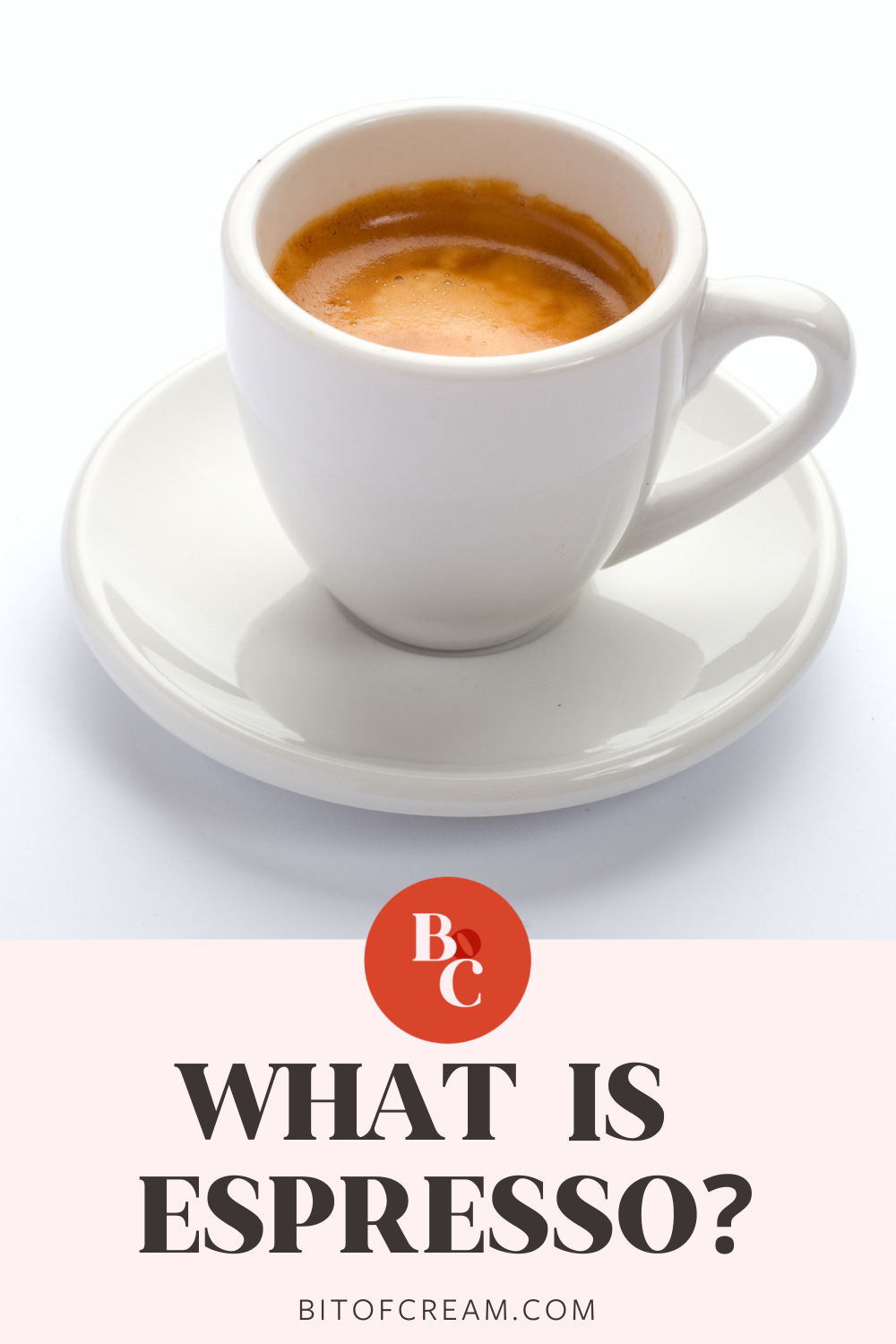
Espresso is the fastest way of preparing coffee on demand.
In about 30 seconds, nearly boiling water is forced through a compressed puck of finely ground coffee at high pressure. The result is a 1-ounce drink called a “shot.”
Dissolving sediment from coffee beans into water is the basis for all coffee drinks. The espresso method is no different at a fundamental level. Only it provides finer control over the pressure, temperature, and time used to complete this process.
Minor tweaks to the brewing process have an outsized impact on the resulting cup. For many baristas and engineers like me (..nerd alert!), this is all part of the fun.
We’ll dig deeper into the method, but first, let’s look at some of the sensory qualities that make espresso unique.
Taste
Espresso carries the same flavor qualities as “regular” coffee, only in a much more concentrated package.
None of the bitter, sweet, acidic, or toasty notes are diluted with extra water. So you can actually taste them!
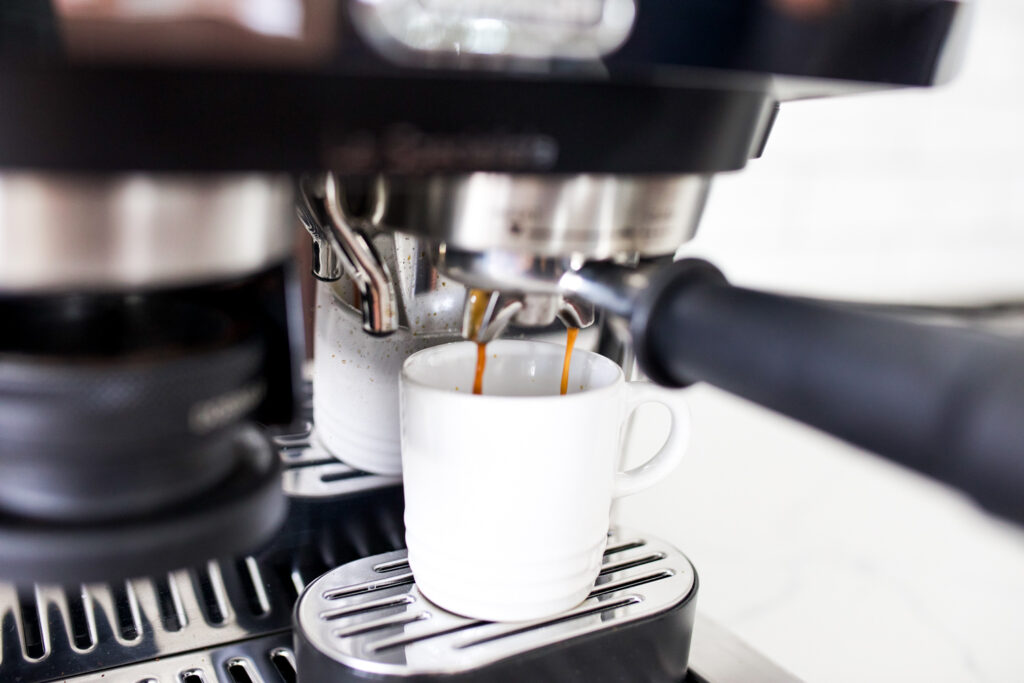
If you’re brewing single-origin coffee, then espresso is the best way to taste the unique flavor qualities of those specific beans.
Texture
One of the first sensory characteristics you’re likely to notice is that espresso is thicker and creamier than other coffee. Especially the layer of “crema” that tops the cup.
This crema is an emulsion of tiny CO2 bubbles trapped by the natural oils released by the coffee beans. It will linger on your tongue after each sip, creating a flavor sustain that you won’t find anywhere else.
The full-bodied texture of espresso enhances the flavor of the cup.
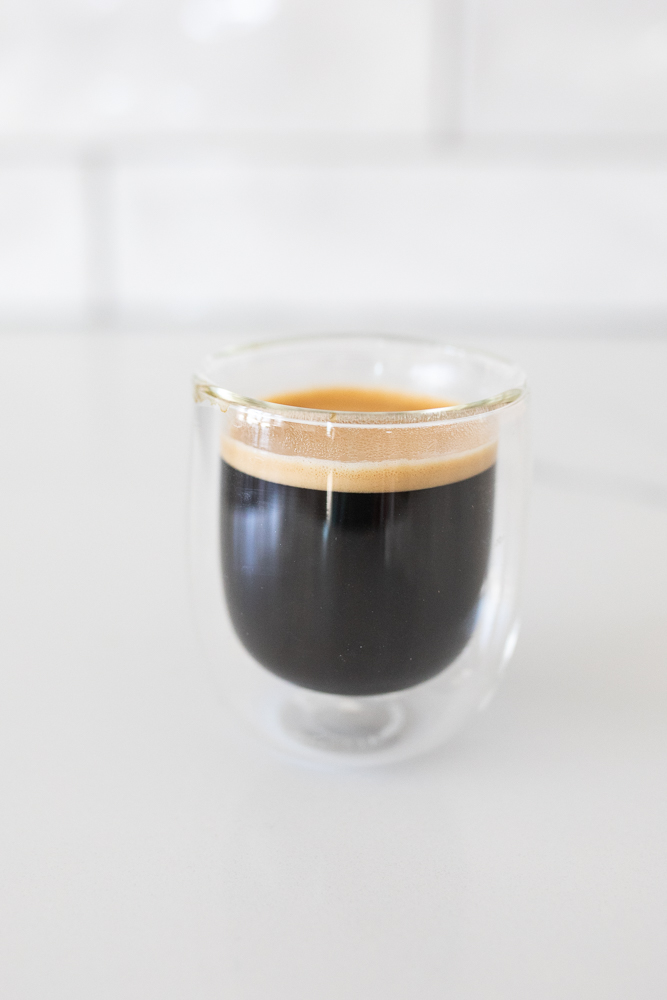
Appearance
A finished espresso shot will appear creamy and honey-brown, with a thicker layer of crema on top. The presence of crema is a good indicator your shot was pulled correctly, using fresh beans.
When you observe a shot being pulled in real-time, you’ll see that the color arrives in layers. To start, the pull looks dark cacao in color and syrupy consistency.
Later in the pull, the tones lighten to an orange or blonde hue.
If you look closely at a finished cup, the liquid settles into layers, with the darkest portions settling to the bottom and a light ¼” of crema atop the cup.
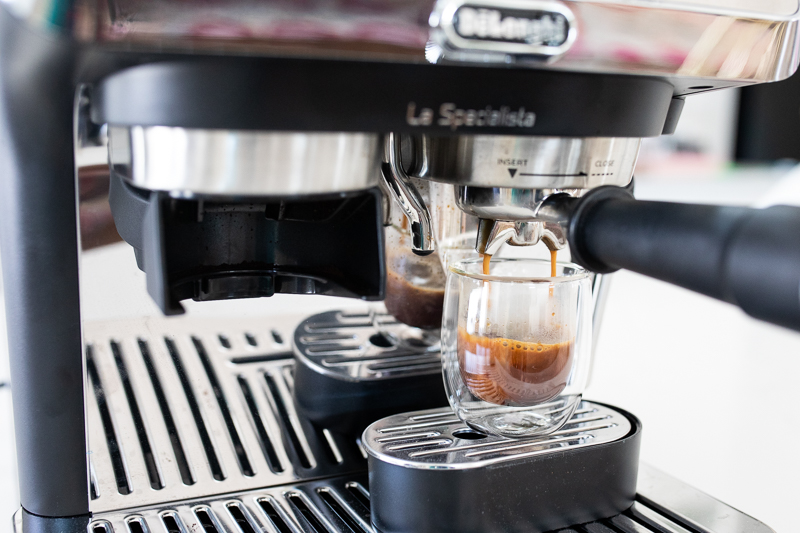
Volume
Espresso is usually served in a small glass or ceramic mug. These “demitasse cups” are sometimes accompanied by a saucer or spoon.
Demitasse cups tend to hold 2-4 fluid ounces, which is perfect for espresso. A single shot is served at 1 ounce, and a double (also called “doppio”) is served at 2 ounces.
Caffeine
Compared to drip coffee, espresso contains more caffeine by volume. But the serving sizes tend to be much smaller. Because of this difference in volume, a single espresso shot contains significantly less caffeine than a single cup of coffee.
As a general guideline, you can expect an 8 oz cup of coffee will contain 96 mg of caffeine. And a 1 oz shot of espresso contains 64 mg.
While these figures are generally agreed upon, there is some variation from one cup to the next.
History Of Espresso
The first steam-driven coffee machines were introduced in the 1880s in Turin, Italy. The original designs forced steam through packed coffee. Although it burned the coffee, it also produced a swift cup.
Traditional Turkish-style coffee took several minutes to prepare, but espresso could be ready in about 30 seconds. And so, espresso took off in Italy’s coffee houses.
Today, the machines have improved A LOT, and espresso culture has spread like wildfire.
Italy may still be the Mecca of coffee culture, but baristas from every corner of the world have put their mark on the craft. The traditional espresso method is now integrated with thousands of local food cultures. There are hundreds of new ideas about how to prepare, serve and consume it.
Even with this evolution, the core elements of espresso haven’t changed much in over a century.
Critical Elements Of Brewing Espresso
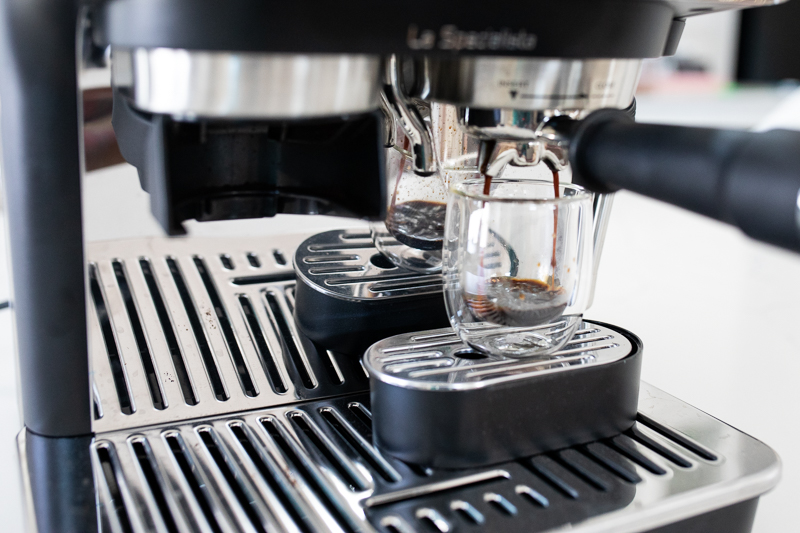
The fundamental elements of espresso brewing are pressure, temperature, and time.
You can generate similar results using other methods like Aeropress or Moka pot. Even so, you’ll need an espresso machine to brew up the real thing.
Why?
An espresso machine can generate these inputs with incredible precision, consistency, and speed. You simply can’t replicate the process by hand.
Finding a quality espresso maker is critical, but even with a top-class machine, it takes practice and a lot of patience to master this craft.
Pressure
Espresso machines provide fine control over the pressure used to force hot water through the ground coffee. When pulling espresso, you’ll want 9-10 bars of pressure.
This means the force of water moving through your coffee grounds should be at least 9-times the weight of the natural atmosphere at sea level.
Let’s compare it with an Aeropress to understand how much pressure this is. An Aeropress, which is a fantastic $30 maker of espresso-style coffee, only generates up to 1 bar of pressure!
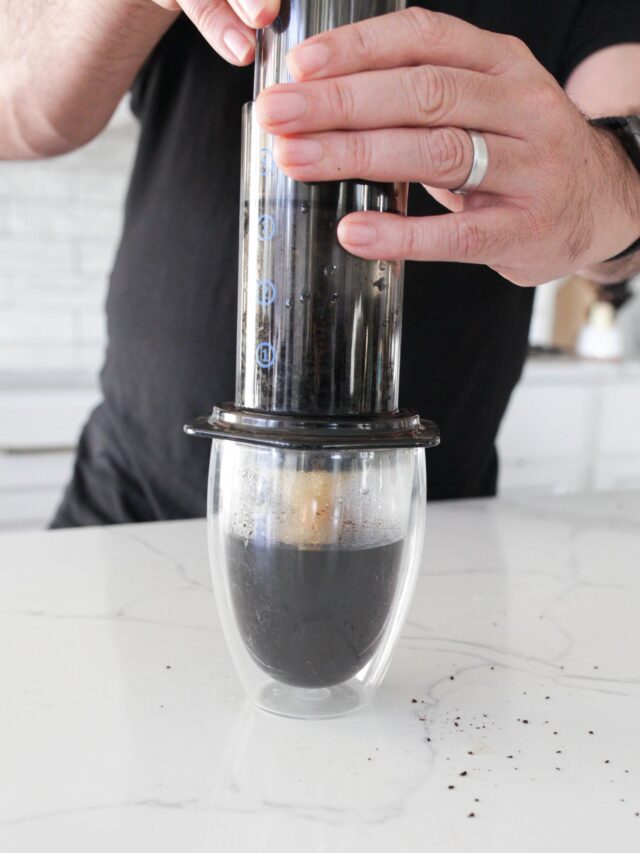
An espresso machine’s high level of force is essential for generating a concentrated cup. It’s also how you achieve a rich texture and thick crema – the main attraction of espresso!
Temperature
Water temperature is more important than you might expect for any brew method, and espresso is no different. The optimal temperature is between 195-205 Ft.
Any hotter (for example, if your water is boiling) and the coffee may burn. And if the water is cooler, the extraction won’t be as effective.
The boiler on most espresso machines provides precise control over water temperature so that you’re neither too hot nor too cold.

Coffee Selection
In truth, “espresso beans” are no different from standard “coffee beans.” In fact, beans from the same coffee plant can be prepared using any brew method.
Roast level isn’t a defining factor either.
Espresso can be prepared using light, medium, or dark roast coffee. Most professional shops prefer a darker roast coffee for espresso because it provides a heavier body, less acidity, and more crema.
It’s all a matter of personal preference.
What is a dark roast? The higher temperature achieved during roasting, the darker the roast.
For espresso, the grind size of the beans is far more impactful than their roast level or place of origin. Beans should be ground to a very fine diameter (slightly finer than table salt) for espresso, compared with regular coffee.
Using smaller grains (and more of them) maximizes the surface area of the coffee that is exposed to the water rushing through it. This leads to a faster extraction and more flavor.
Coffee Ratio
Perhaps the most critical element of espresso brewing is the ratio of ground coffee compared to the resulting cup, as measured by weight. This ratio is essential for generating consistent results.
It’s broadly agreed upon in the coffee community that espresso should have a ratio of 1:2.

Why measure by weight?
The short answer is Crema. It’s mostly gas so you could pull 2 similar-looking shots with very different amounts of water.
Adjust this ratio, and you’ll get a very different cup. For example, adding more liquid will result in more coffee extraction. It would also decrease the body and texture of the shot.
Coffee Density
A portafilter is a small metal basket with a micro-mesh bottom and a long handle. Ground coffee is compressed into this basket through a process called “tamping.” Then the whole assembly is clipped into the espresso machine.
During the pull of an espresso shot, water is forced into the portafilter, through the coffee pack, and out a spout into your awaiting cup.
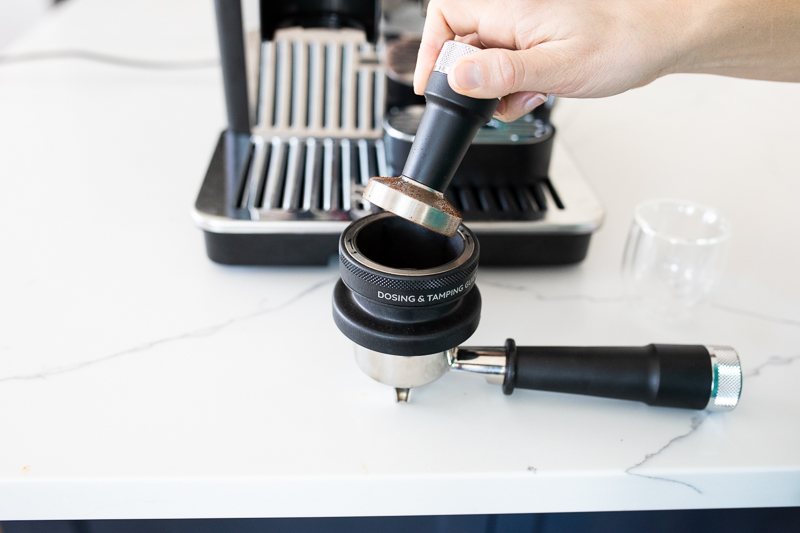
The density of ground coffee in the portafilter greatly impacts the resulting cup.
Water always finds the path of least resistance. If one side of the portafilter is dense and the other is loose, you can expect more water to pass through the “loose” corridor. This means less extraction for the same volume cup – less flavor, worse result.
Extraction Time
When “pulling” an espresso shot, the time that your water is in contact with the coffee grinds is another factor that impacts the cup. As a rule of thumb, the duration of an espresso pull should be 25-30 seconds.
Shorter contact means less extraction and a more acidic drink with a lighter body. Slower contact results in a sweeter drink with a heavier body.
How To Drink Espresso
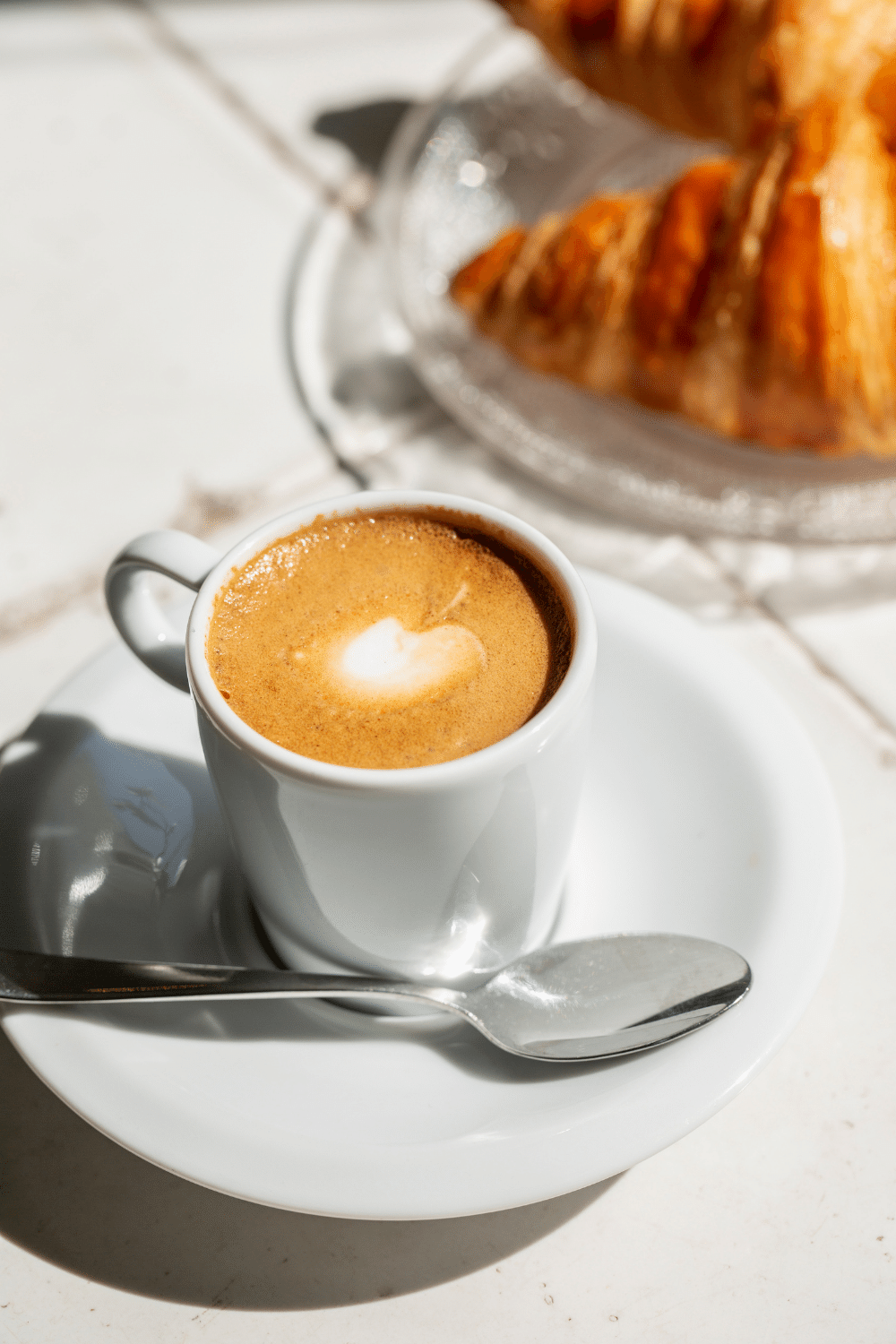
It’s worth trying espresso in a Third Wave coffee bar, where the barista has perfected their method. These days you can also make great espresso at home.
For variations on a traditional espresso, try a Lungo or Ristretto. These drinks are made using the same brew method with slight adjustments to the Coffee Ratio and Extraction Time.
A Ristretto (or “Restricted” espresso) is a smaller and more concentrated version of espresso. It has more crema, sweetness, and viscosity. Ristretto works well with milk-mixed drinks because the strength of the coffee will cut through the flavor of the milk.
A Lungo (or “Long” espresso) is a thinner cup served at a greater volume. There is more caffeine because of a longer extraction time, but the end result is more diluted. Lungo is great for tasting origin flavors of the coffee beans.
Beyond Ristretto and Lungo, there are dozens of other coffee-and-water recipes worth trying. If you mix milk, the number of drink options is seemingly limitless.
*Read more Lungo vs Espresso
Espresso vs. Drip Coffee
Most people would characterize espresso as a “stronger” drink than drip coffee. It is bolder in flavor with a heavier body and more caffeine per ounce. Simply put, espresso is more intense!
Drip coffee actually has more extracted coffee sediment and caffeine than espresso in a single cup. Since drip coffee is diluted with more water, you won’t experience it in such an intense way with each sip.
While the same coffee beans can be used for both espresso and drip coffee, most espresso is made using a darker roast. This translates to more flavor and less acidity in the cup.
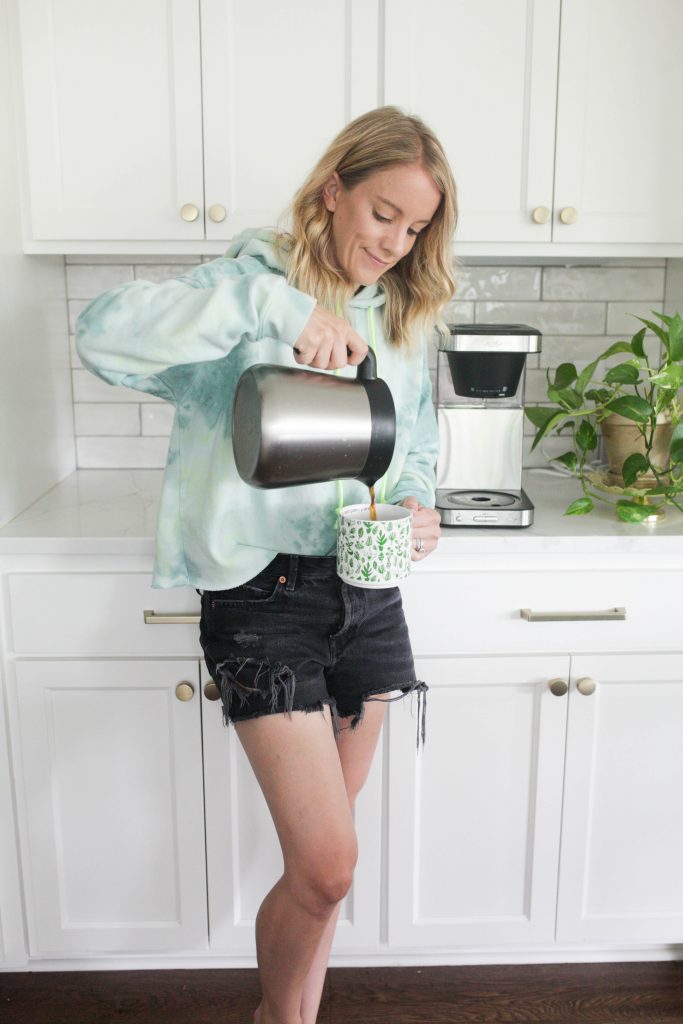
The espresso brewing process does require skill, practice, and the right tools. Unlike “set it and forget it” drip coffee, espresso is prepared and served to order.
A finer grind is required for espresso to ensure maximum coffee extraction happens across the shorter brew window.
Every coffee brew method has its merits (and drawbacks), but espresso is often considered to be the top dog.
How To Pull An Espresso Shot

As the idea of becoming a “barista at home” is catching on, so are several new options for pulling espresso.
Suppose you want espresso at home without doing so much work. Companies like De’Longhi are now creating machines that automate much of the process.
If you want maximum control over your espresso, there is no substitute for operating a manual espresso machine. It will allow you to tinker with key variables like the dosing ratio and extraction time.
Remember, you can get VERY granular with your process. For many people, this becomes a lifelong pursuit. My tutorial below is intended to serve as a starting point!
Step One: Prepare The Portafilter
Start by preparing your environment.
Remove the portafilter from your espresso machine. Activate the hot water flow for about 1 second to clear any remaining grinds that may still be present from the previous shot.
The portafilter should be clean, dry, and hot.
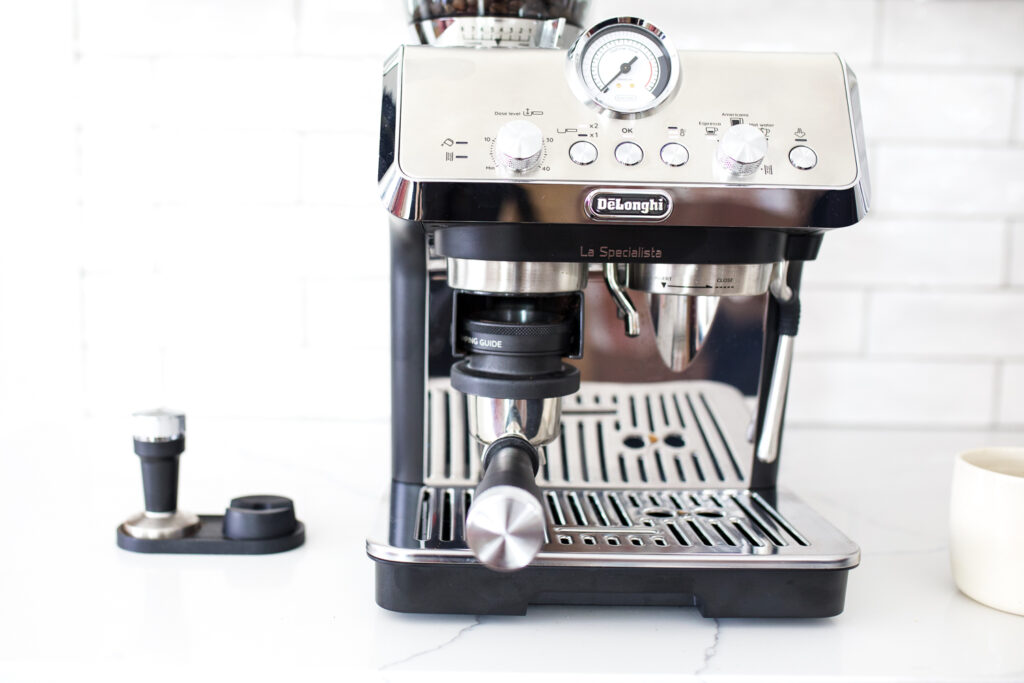
Knock out or wipe away any coffee grounds that have already been extracted. Clear out moisture with a soft towel, so that the new coffee pack doesn’t begin extraction immediately upon contact with the portafilter.
While you’re at it, reset your extraction timer. Or, if you’re like me, open the timer function on your smartphone, so it’s ready to go.
Step Two: Set The Grind
This step is crucial if you’re using the same grinder for other brew methods.
First, ensure the hopper on your grinder is filled with sufficient whole coffee beans. The fresher, the better. Here are a few excellent coffee bean options for espresso.
Next, set the grind size. You’ll want a very fine grind, with particles around 0.88 mm in diameter.
Most coffee grinders have an easily adjustable grind diameter, but the names and labels differ depending on the brand. Typically the finest setting is suitable for espresso.
Step Three: Dose The Shot
If you are dosing by weight, which you really should for best results, start by zeroing your portafilter on a digital scale. Leave the scale on.
Place the portafilter flat against the catch fork on your grinder. Then press the grind trigger to center-fill the basket to 9 grams for a single shot.
Most espresso grinders include a time-based function that will approximate the amount of coffee you’ll need to pull a single (or double) shot. But they don’t actually weigh the fill.
That’s where your digital scale comes in!
You’ve already zeroed your scale to the weight of the portafilter, so the new weight reading should account for only the coffee. If your dose is not 9 grams, adjust the grinder settings for greater precision for the next shot.
Step Four: Level And Tamp
Leveling creates a flat surface for better tamping.
And sound tamping creates even density across your coffee puck so that water flows through evenly during the brewing process. This is essential for proper extraction.

Lightly tap the outside of the portafilter, so the grounds settle evenly across the basket. Rotate the portafilter slightly while doing this for a better result.
Rest the leading edge of the portafilter on a flat counter surface, holding the handle at an angle above the counter with your non-dominant hand. Doing so will provide tamping stability and a firm surface to press against.
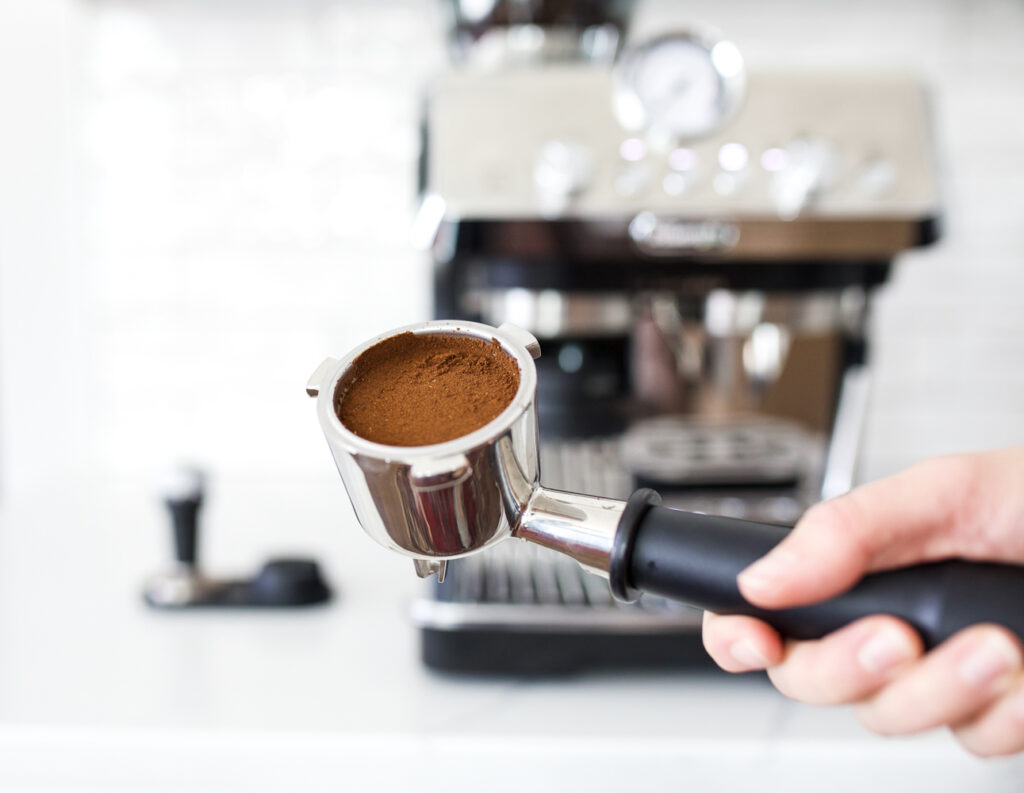
Grip the tamper firmly with your dominant hand, and press down evenly onto the portafilter at a 90-degree angle. Your pressure should be firm but controlled, with the goal of removing all of the air from between the individual grounds.
Wipe away any loose grounds that have come to rest on the rim or exterior of the portafilter.
Step Five: Pull The Shot
Lock the portafilter into place on your espresso machine. Make a tight seal so that all water flows through the coffee pack, rather than escaping through the joint and making a mess.
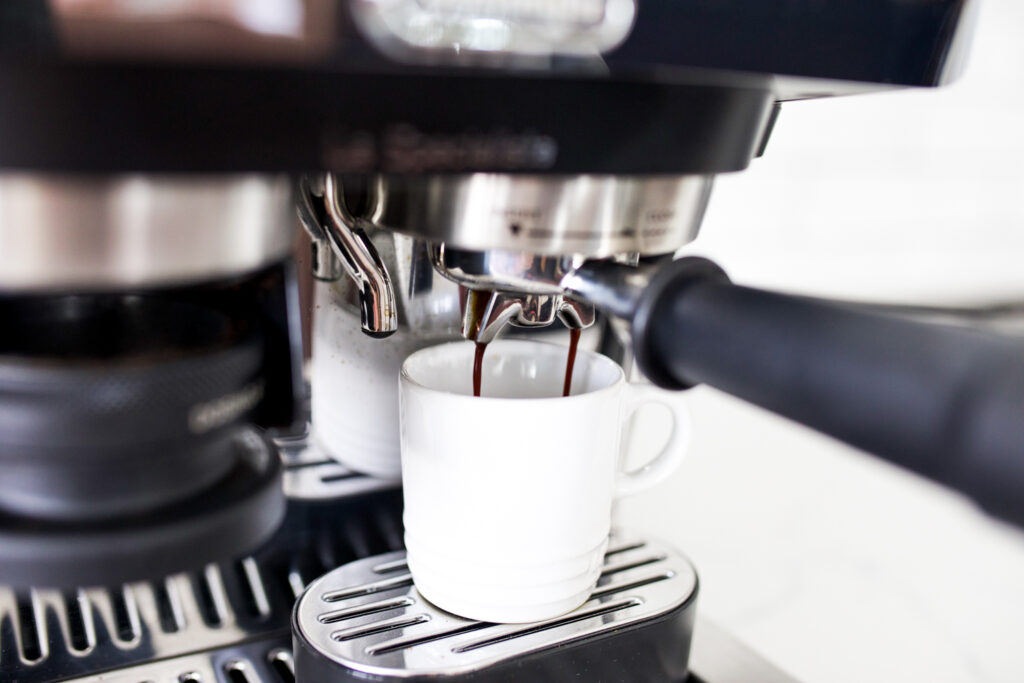
Wipe the catch tray and place your cup below the portafilter. Then engage the group head – the metal fixture that ushers water out of the machine and into the portafilter basket. Depending on your machine, this is probably accomplished by pushing a button or pulling a lever.
Start your extraction timer. Let the shot run for 25-30 seconds.
Step Six: Watch And Learn
Now watch and learn while the shot is pulling.
Not only is the process beautiful to behold, but you can also improve your technique by being present with what is happening during the pull.
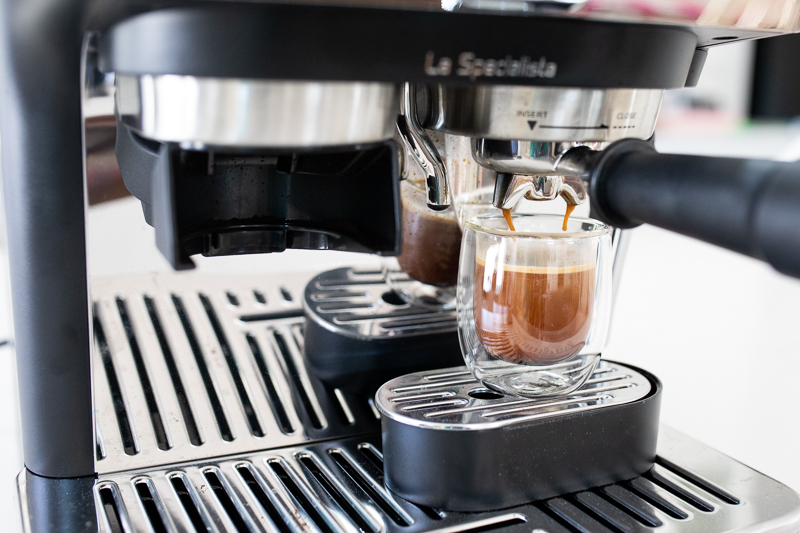
See how the coffee flows out of the portafilter basket. It should express at an even rate from every side of the mesh, then gather and pour cleanly from the center without looking diluted. If you notice the expression is uneven, this is a good sign your tamping could have been better.
Watch the color of the pour. The extraction should start with a dark brown that gradually lightens as time elapses. The end of the extraction should present blonde.
When the pull is complete, weigh the result. Look for a 1:2 ratio for expresso, so if your input was 9 grams of coffee, then the resulting cup should weigh 18 grams.
Practice makes perfect, and the shot you just pulled will be delicious even if you realize there is room to improve your method.
FAQ
Espresso is a concentrated form of coffee that packs more flavor and caffeine (by volume) than traditional coffee. The serving size is also much smaller, so a full 8 oz cup of coffee will typically have 50% more caffeine than a single 1 oz shot of espresso.
Espresso beans and coffee beans are the same thing. Sometimes packaged coffee is labeled as “espresso beans” or “good for espresso.” This simply denotes a recommendation from the roaster. It often implies a darker roast. Roasting coffee beans to a higher temperature tends to yield a full body and excellent crema when prepared as espresso.
Think of Nespresso as the lite version of Espresso. Like virtually all coffee machines, Nespresso makers force hot water across ground coffee. But if you do an in-depth comparison of espresso and Nespresso machines, the power and precision of an espresso machine is no match for Nespresso. It generates a quality cup that Nespresso simply can’t match.
Want more espresso and coffee fun? Head here!

Great article! I appreciate all the details you’ve loaded into it and it reads so easily. I’m not sure that I’m ready to put my money where my mouth is, but thank you.